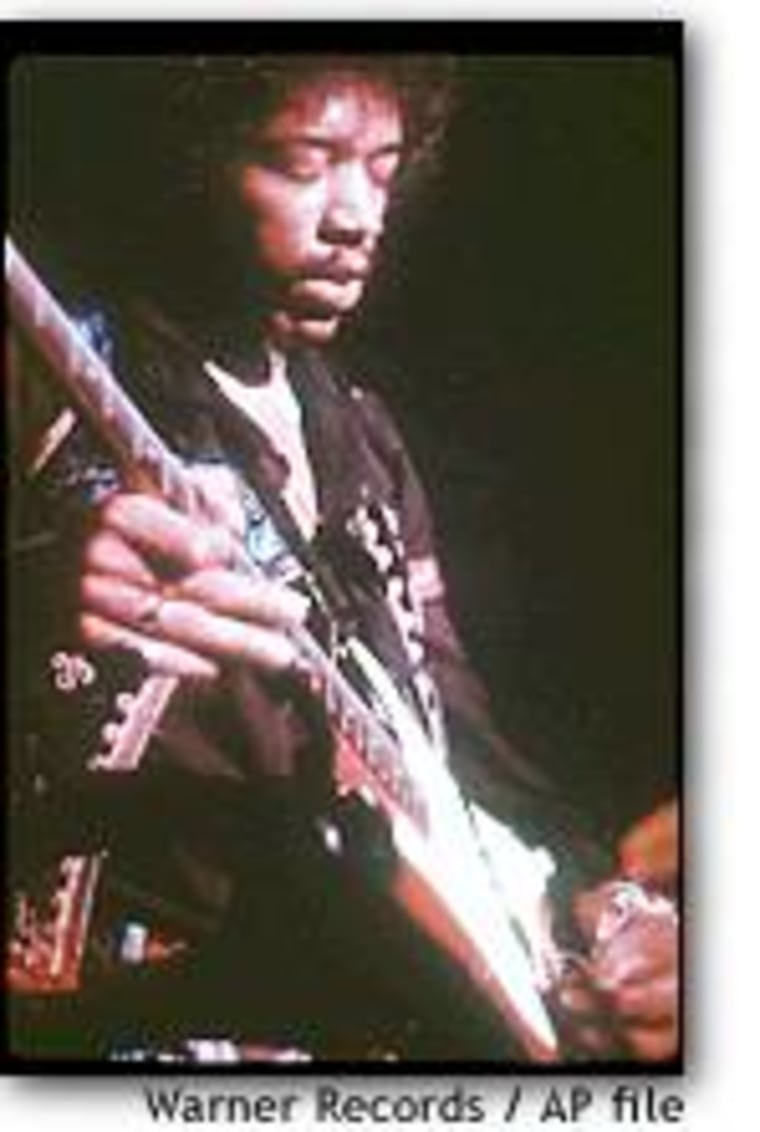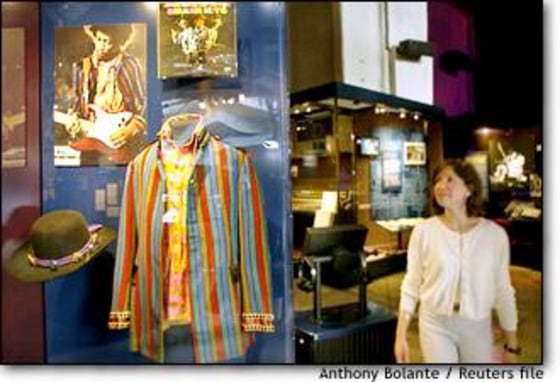Unless you’re a die-hard Jimi Hendrix fan, you might never know that this city tucked into the northwest corner of the United States was the birthplace of one of rock music’s most influential icons. There are no streets named after the guitarist, who was born in Seattle in 1942. His childhood home, high school and burial place are rarely featured in Seattle travel guides.
BUT THE TIMES are a changing, as another singer once said. The 10,000 fans who visit Seattle every year to pay homage to Hendrix, who died of a drug overdose 33 years ago, can now see an expanded exhibition of his memorabilia as well as a new memorial tomb.
The revamped Jimi Hendrix Gallery at the Experience Music Project in Seattle, which opened to the public this month, has doubled in size with previously undisplayed additions from Hendrix’s family, patrons and the museum’s collection.
“For us, it’s an honour that people from all over the world travel here to visit Jimi,” Janie Hendrix, Jimi’s half-sister, said.
“It’s wonderful for people to experience and re-experience the music that was part of their lives,” she said.
Hendrix died in London in 1970 at the age of 27 after a brief but rich career that influenced a generation of musicians who were drawn to his virtuoso electric guitar playing as well as his innovative distortion and feedback techniques.
Earlier this year, the Hendrix family built a new tomb at the Greenwood Memorial Park and Cemetery in Renton, about 10 miles (16 km) south of Seattle, where Hendrix is buried. It features granite walkways, multicoloured marble and benches for visitors.
His previous gravesite in the same cemetery was often muddy from the frequent Seattle rain and littered with beer cans left by fans.
The new exhibition at the Experience Music Project, a museum funded by Microsoft co-founder and Hendrix enthusiast Paul Allen, is organised according to various periods in his life including his childhood years, Army stint, time as a band player for Little Richard and the Isley Brothers, as well his London breakthrough and return to the United States, where he played at Woodstock in 1969.

Among the newest exhibits are drawings that the young Hendrix made during his school years, family photographs and letters, as well as some of his eclectic 1960s clothing.
“He wanted to become an artist before becoming a musician,” said Janie Hendrix.
Visitors to the Hendrix Gallery will be able use a sound mixer to experience how Hendrix combined different sounds and instruments to create his songs.
The exhibition provides Hendrix’s family history, including letters and photos of his grandparents, who settled in Vancouver, Canada after coming to the region as members of a vaudeville troupe.
Some of Hendrix’s smashed guitars are also on display, including the one he demolished on a London stage a week before he played at the Monterey International Pop Festival in 1967.© 2003 Reuters Limited. All rights reserved. Republication or redistribution of Reuters content is expressly prohibited without the prior written consent of Reuters.
